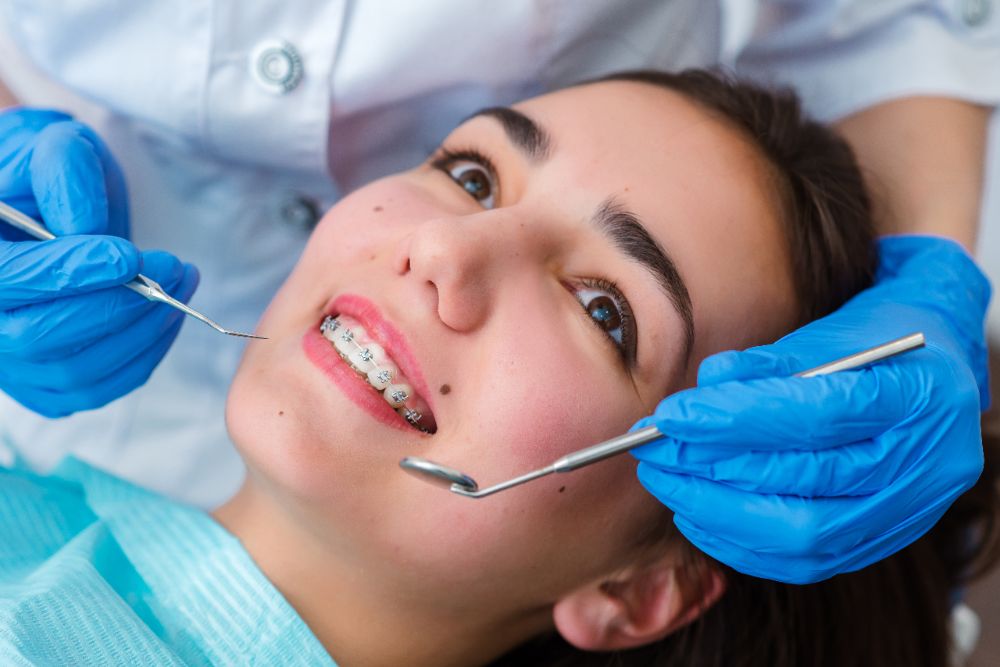How Cumming Orthodontics Can Change Your Smile with Invisalign and Braces
How Cumming Orthodontics Can Change Your Smile with Invisalign and Braces
Blog Article
Comprehensive Overview to Orthodontics Treatments for Fixing Oral Misalignments
Understanding the intricacies of each treatment, including their devices, benefits, and prospective drawbacks, is vital in making informed decisions concerning one's orthodontic treatment. As we navigate with the detailed overview to orthodontic treatments for dealing with oral imbalances, the complex information of each approach will unravel, losing light on the course toward a harmonious and functional dental alignment.
Orthodontic Procedures Review

Normal adjustments and surveillance are vital parts of orthodontic treatment to ensure progression is on track and to make any kind of required modifications along the means. By going through orthodontic procedures, people can not only accomplish a straighter smile yet likewise boost their overall oral wellness and function.
Traditional Dental Braces: How They Function
When considering orthodontic treatments for oral imbalances, typical dental braces stand apart as a time-tested method for remedying teeth placing. Traditional braces include brackets, wires, and bands that collaborate to use constant stress on the teeth, progressively relocating them into the desired alignment. The brackets are connected to the teeth utilizing an unique adhesive, and the cords are threaded via the braces. By readjusting the tension of the wires, orthodontists can control the direction and force applied to each tooth, guiding them into proper positioning gradually.
As pressure is applied to the teeth via the dental braces, the bone bordering the teeth is reshaped to sustain the new tooth placements. Patients will need normal adjustments at the orthodontist's workplace to make certain the braces proceed to use the right pressure for efficient teeth movement.
Unseen Aligners: Disadvantages and pros
These clear, customized trays are basically invisible when worn, making them an attractive option for individuals looking for an extra aesthetically pleasing orthodontic treatment. Clients can get rid of the aligners prior to consuming or cleaning their teeth, lowering the risk of food getting stuck in the appliance and simplifying the cleaning process.

Surgical Orthodontic Options
Surgical interventions in orthodontics existing viable alternatives for attending to complex oral misalignments that might not be successfully solved through conventional orthodontic therapies. While undetectable aligners and standard braces can deal with numerous orthodontic issues, specific cases need surgical treatment to achieve optimum results. Surgical orthodontic alternatives are generally advised for serious malocclusions, significant jaw discrepancies, and situations where the underlying bone framework needs adjustment to achieve proper alignment.
One typical surgical orthodontic procedure is orthognathic surgical procedure, which involves rearranging the jaws to fix useful issues such as difficulty talking or chewing. This surgery is often executed in cooperation with an orthodontist that assists straighten the teeth prior to and after the procedure. Surgical orthodontics may additionally involve procedures to expose influenced teeth, get rid of excess gum tissue, or reshape the jawbone next page to produce a more harmonious face profile.
Before taking into consideration medical orthodontic alternatives, clients undergo an extensive assessment to identify the necessity and potential advantages of such interventions. cumming invisalign. While surgical procedure may seem challenging, it can substantially improve both the feature and aesthetic appeals of the smile in instances where traditional orthodontic treatments fall short
Retainers and Post-Treatment Treatment

Failing to conform with post-treatment care guidelines can result in relapse, where the teeth slowly relocate back in the direction of their original settings. Consistent retainer wear, great oral health, and normal oral check-ups are important for keeping the outcomes achieved via orthodontic surgical treatment and ensuring the lasting stability of the remedied oral positioning.
Verdict
To conclude, orthodontic procedures supply numerous choices for dealing with dental misalignments. Typical braces utilize metal braces and cables to change teeth right into proper positioning. Unnoticeable aligners offer an even more discreet option yet may not appropriate for all cases. Surgical orthodontic choices are available for extra extreme misalignments. Retainers are commonly used post-treatment to preserve the brand-new placement. In general, orthodontic treatments can efficiently improve dental health and visual appearance.
As we navigate her latest blog through the detailed guide to orthodontic procedures for correcting oral imbalances, the detailed information of each technique will unravel, dropping light on the course towards a functional and harmonious oral alignment. - braces
One of the most usual orthodontic therapies is the use of dental braces, which consist of metal brackets and wires that apply mild pressure to gradually change teeth right into the desired placement.When thinking about orthodontic therapies for dental imbalances, traditional braces stand out as a reliable approach for correcting teeth positioning. In addition, invisible aligners may not be appropriate for complex orthodontic issues that require even more substantial teeth activity, as they are normally advised for moderate to moderate instances. Retainers are customized orthodontic devices developed to hold teeth in their fixed settings after the lumineers conclusion of orthodontic therapy.
Report this page